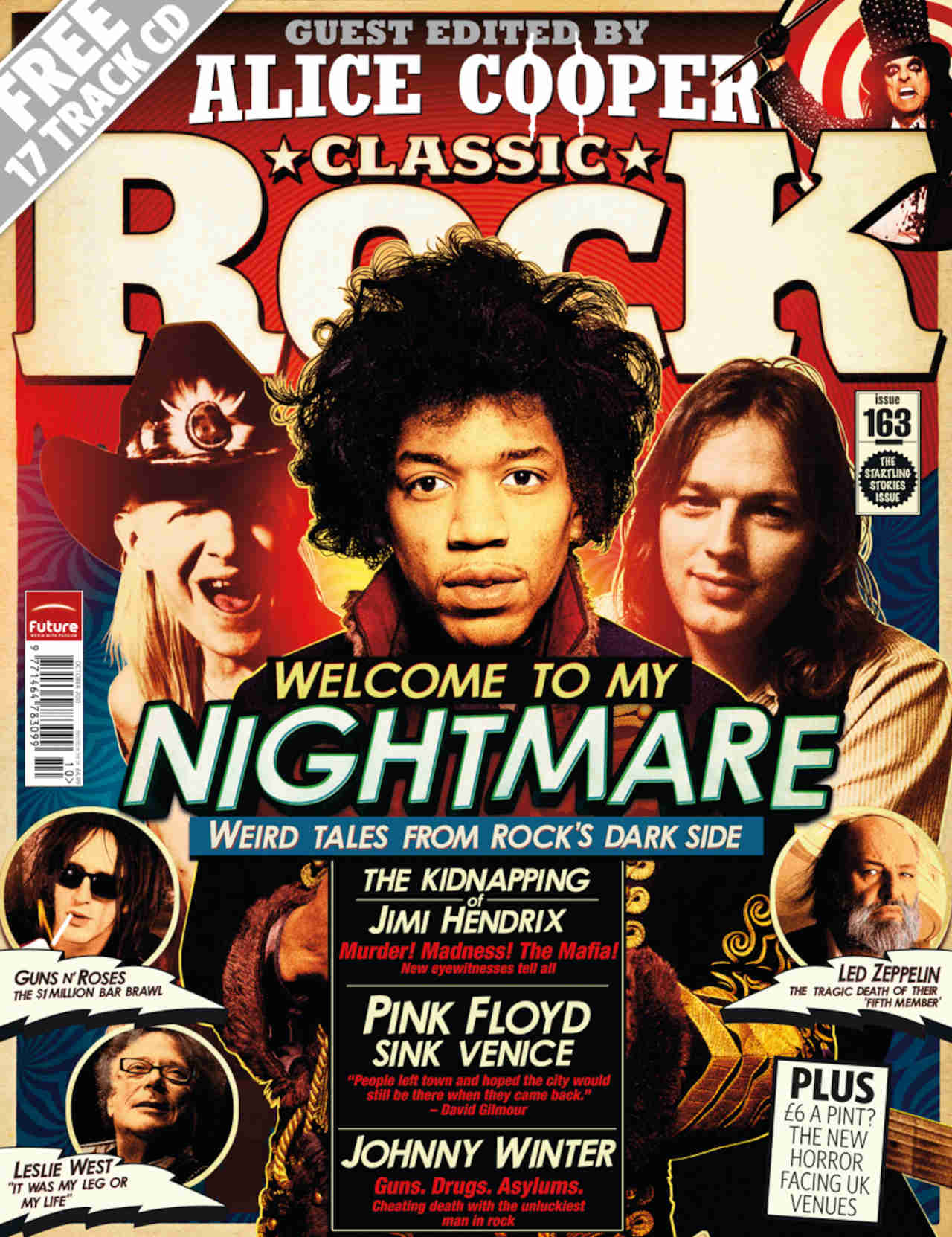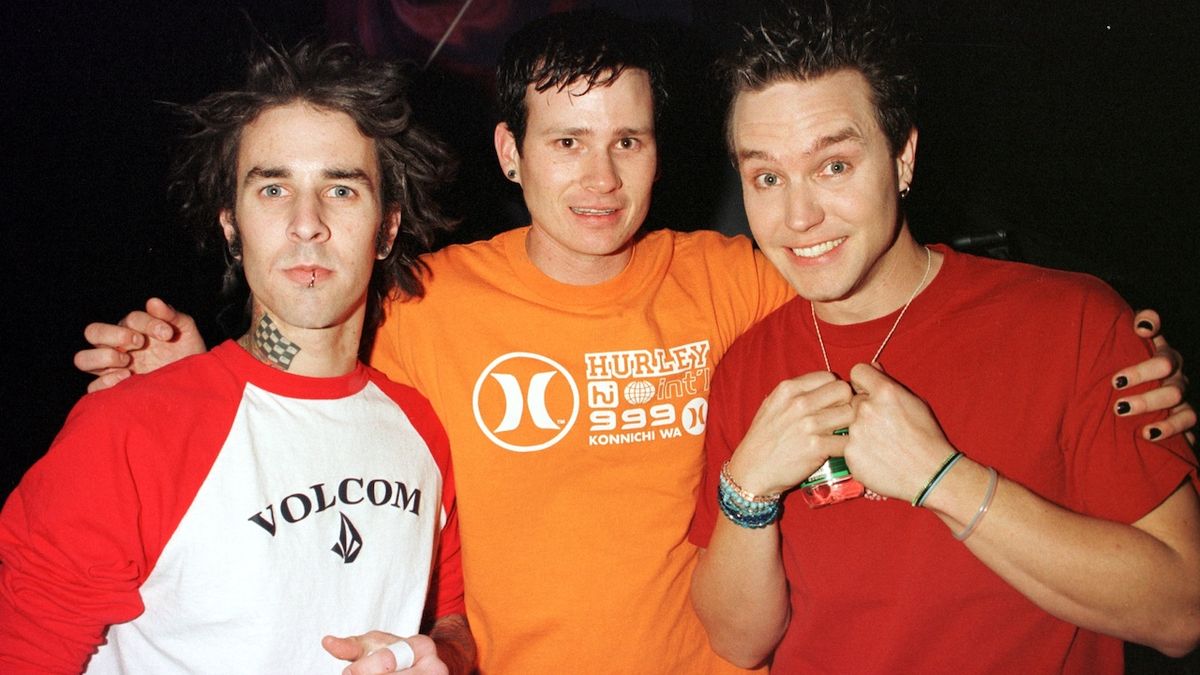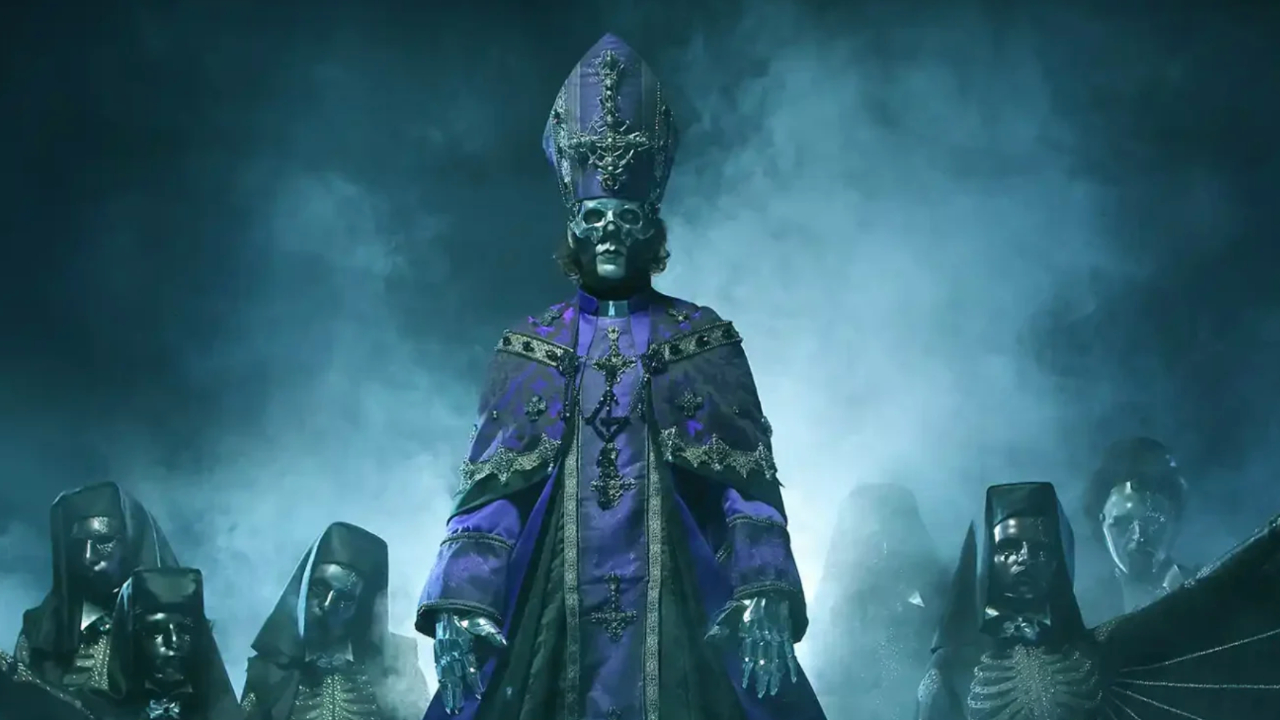
Feature Photo: U.S. Department of Defense photo by SRA Andrew J. Rice, Public domain, via Wikimedia Commons
The word “man” in song titles has inspired some of the most memorable tracks across different genres and eras, each using it to bring out unique angles on human experience. From Billy Joel’s heartfelt storytelling in Piano Man to David Bowie’s mysterious reflections in The Man Who Sold the World, every song on this list highlights a different take on what it means to be a “man.” There’s the enduring wisdom of Lynyrd Skynyrd’s Simple Man, the raw force of Black Sabbath’s Iron Man, and the wanderer’s spirit in the Allman Brothers Band’s Ramblin’ Man. Each song here—from Chicago’s powerhouse I’m a Man to America’s reflective Tin Man and Rush’s anthemic Working Man—brings something distinct to the table, showing how a single word can inspire artists to explore everything from resilience to vulnerability. This collection celebrates the diversity and depth of meaning in songs that have made “man” their center.
# 10 – Working Man – Rush
“Working Man” by Rush, the first entry in this list, encapsulates the frustrations and aspirations of the everyday worker. Released in March 1974 as part of Rush’s self-titled debut album, this song embodies the hard rock spirit of the era with its powerful riffs and relatable lyrics. The track was recorded in 1973, capturing the energy and raw sound that Rush was known for in their early years, with Geddy Lee on bass and lead vocals, Alex Lifeson on guitar, and John Rutsey on drums. Produced by the band itself, “Working Man” emerged as a staple for those facing the relentless grind of daily life, resonating strongly with fans across North America, particularly blue-collar workers who identified with its message.
The song’s lyrics vividly portray the monotonous routine of a man who works tirelessly from nine to five, expressing a yearning for more fulfilling experiences beyond his work life. Lines like “I got no time for livin’, yes, I’m workin’ all the time” speak to the limitations imposed by a demanding job, a sentiment that would become especially relatable as the economic landscape of the 1970s became increasingly strained. The refrain “They call me the workin’ man, I guess that’s what I am” serves as both a resignation and a declaration, acknowledging the identity that society assigns based on one’s role as a worker. Rush’s choice to feature a simple, direct narrative reflects the grounded, raw realism that’s central to the song’s appeal.
Musically, “Working Man” is built around a driving guitar riff from Alex Lifeson, which, combined with John Rutsey’s assertive drumming, gives the track a gritty, unpolished feel. Geddy Lee’s high, almost pleading vocals add a layer of urgency to the character’s plight, and the song builds toward a powerful instrumental crescendo. This intensity is maintained throughout the song’s seven-minute length, culminating in a searing guitar solo that conveys the trapped energy of the “working man” character. The relentless rhythm, paired with Lee’s steady bassline, evokes a sense of routine yet underscores the desire for liberation — a theme that would echo in future Rush works.
The critical reception of “Working Man” was pivotal in Rush’s career. Thanks to DJ Donna Halper at WMMS, the song’s popularity among Cleveland radio listeners led Mercury Records to sign the band, effectively jumpstarting their long and storied career. “Working Man” introduced Rush as a formidable force in rock with a knack for relatable lyrics and instrumental skill.
Read More: Alex Lifeson of Rush: The ClassicRockHistory.com Interview
# 9 – Ramblin’ Man – The Allman Brothers Band
“Ramblin’ Man” by The Allman Brothers Band is a quintessential Southern rock anthem, capturing the restless spirit of a life on the move. Released as the lead single from the band’s 1973 album Brothers and Sisters, the song was written by guitarist Dickey Betts. Its recording sessions took place at Capricorn Sound Studios in Macon, Georgia, with the album produced by Johnny Sandlin, a longtime collaborator and close friend of the band. The single became an instant hit, reaching number two on the Billboard Hot 100, and remains one of the band’s most iconic songs, widely celebrated for its upbeat tempo and classic country-rock blend.
“Ramblin’ Man” tells the story of a man embracing the nomadic lifestyle, echoing the age-old themes of freedom, adventure, and the draw of the open road. The line “Lord, I was born a ramblin’ man” anchors the song, expressing a sense of acceptance of his transient life and even a bit of pride in his inability to settle down. Unlike other songs on this list, which may reflect personal struggle or introspective questioning, “Ramblin’ Man” embodies the carefree ethos of a man who understands and even revels in his nature, resonating with fans who feel the same yearning to keep moving forward. This alignment of lyric and tone, combined with the song’s Southern charm, gives “Ramblin’ Man” a timeless appeal.
While “Working Man” by Rush, the first entry in this list, reflects the day-to-day realities and frustrations of working life, “Ramblin’ Man” takes a different route, embracing freedom and the pull of the road. It contrasts sharply with the grounded narrative in “Working Man,” offering instead an ode to independence and the thrill of perpetual movement. This thematic juxtaposition highlights the diversity in songs that capture the essence of “man” through different lenses of identity and purpose.
Read More: Top 10 Allman Brothers Band Songs
# 8 – Lucky Man – Emerson, Lake & Palmer
“Lucky Man” by Emerson, Lake & Palmer is an introspective addition as the third song on this list, following the grounded resilience of Rush’s “Working Man” and the wandering spirit of The Allman Brothers Band’s “Ramblin’ Man.” Released on Emerson, Lake & Palmer’s 1970 debut album, “Lucky Man” paints a poignant narrative of privilege and fragility. While “Working Man” embodies the everyday struggles of the labor force and “Ramblin’ Man” captures the essence of a restless soul, “Lucky Man” contrasts these themes by illustrating a man blessed with wealth and honor yet vulnerable to fate’s final reckoning.
The song was recorded in 1970 and became iconic for featuring one of the earliest uses of the Moog synthesizer in rock, played by Keith Emerson in an impromptu solo that gives the song its haunting close. Greg Lake penned the lyrics at the age of twelve, and the song’s simplicity, combined with Lake’s earnest vocals and Palmer’s solid drumming, brought a soft, reflective edge to the band’s complex progressive rock stylings. This synthesis of innocence and maturity in the lyrics, describing a man with “white horses and ladies by the score,” touches on both the allure of wealth and the inevitable vulnerability of life. Unlike the persistence in “Working Man,” where the protagonist pushes through adversity, or the free spirit in “Ramblin’ Man,” here, the so-called “lucky man” cannot escape mortality despite his riches and status.
“Lucky Man” achieved recognition on multiple charts, peaking in the top 20 in the Netherlands and performing well in North America. The lyrics create a tragic juxtaposition of opulence and helplessness, as lines like “A bullet had found him, his blood ran as he cried” underscore the unavoidable end. Emerson’s Moog solo acts as a chilling reminder of life’s impermanence, turning the final moments of the song into a somber reflection on luck’s transient nature.
Read More: Top 10 Emerson, Lake & Palmer Songs
# 7 – The Man Who Sold The World – David Bowie
“The Man Who Sold the World” is an enigmatic composition by David Bowie and serves as the title track for his third studio album, recorded in 1970 at Trident and Advision Studios in London and produced by Tony Visconti. Known for its haunting vocal phasing and circular guitar riff, the song carries an atmosphere that draws listeners into a shadowed narrative. Mick Ronson’s guitar work provides a hypnotic undercurrent, which complements Bowie’s vocals, creating a disquieting tone. The song’s production is layered with experimental effects, like phasing on the vocals, which deepen its eerie resonance. Bowie’s ambivalence during the album’s recording adds an edge to his performance; he recorded his vocals only on the final day of mixing, giving the piece an almost improvisational intensity.
The lyrics explore themes of duality, identity, and existential disconnection, inspired in part by William Hughes Mearns’s poem “Antigonish,” which evokes a ghostly presence with the line, “I met a man who wasn’t there.” This spectral tone persists as Bowie’s narrator encounters a familiar stranger “upon the stair,” someone who seems to represent a lost version of himself or an alter ego. The lyrics confront the idea of selling one’s soul or losing authenticity, with phrases like “I thought you died alone, a long, long time ago.” This dialogue within oneself brings a unique complexity that touches on themes of self-betrayal and loss of control.
Although it did not gain immediate recognition upon its release, “The Man Who Sold the World” would later receive critical acclaim and significant reinterpretation. Scottish singer Lulu’s 1974 cover, co-produced by Bowie, introduced the song to a broader audience, reaching No. 3 on the UK Singles Chart. Later, Nirvana’s 1993 acoustic rendition on MTV Unplugged brought the track renewed attention, casting it in a raw, introspective light that resonated with new listeners. Bowie’s revisitation of the track in later performances, such as during his 1995 Outside Tour, offered darker, more somber renditions that underscored the song’s thematic weight, and an acoustic version recorded in 1996 brought an intimate perspective to the lyrics.
Read More: David Bowie’s Influence On Music And Society
# 6 – Tin Man – America
“Tin Man,” released by America in 1974, stands as one of the band’s most emblematic tracks. Written by Dewey Bunnell and featured on the album Holiday, the song captures a mystical quality, with lyrics alluding to the Tin Woodman from The Wizard of Oz. Produced by the renowned George Martin, who also played piano on the track, “Tin Man” showcases America’s soft-rock style and Bunnell’s distinct, almost dreamlike lyricism. Martin’s production layers the song with gentle yet intricate instrumentation that complements the reflective mood. The track’s acoustic warmth is enriched by America’s signature harmonies, creating an inviting soundscape that evokes a sense of longing and introspection.
Lyrically, “Tin Man” draws on Bunnell’s fascination with The Wizard of Oz, adding a philosophical twist. The lyrics’ most memorable line, “Oz never did give nothing to the Tin Man that he didn’t, didn’t already have,” suggests themes of self-realization and inner completeness, mirroring the Tin Man’s quest for a heart he already possesses in a metaphorical sense. Bunnell’s introspective lyrics are a blend of poetic license and surreal imagery, as he himself admitted. Describing lines like “Smoke glass stain bright color, image going down, down, down, down,” he brings forth a vivid yet abstract expression of introspection and personal journey, hinting that life’s complexities are as layered as the character of the Tin Man.
Upon its release as the lead single from Holiday, “Tin Man” quickly rose in popularity, becoming America’s fourth top-ten hit in the U.S. and spending three weeks at number four on the Billboard Hot 100. The song reached the top of the Billboard Easy Listening chart, cementing its appeal across varied audiences. While it did not chart in the UK, it resonated in North America, where it secured a place as one of America’s defining songs. The relaxed, reflective tempo of “Tin Man” contrasts with the raw energy found in other songs on this list, such as Rush’s “Working Man,” which embraces a more aggressive, working-class sensibility. In comparison, “Tin Man” contemplates the quieter quest for self-fulfillment, highlighting how the song’s gentle arrangement complements the reflective tone of Bunnell’s lyrics.
Read More: America’s Best Song On Each Of Their Studio Albums
# 5 – Iron Man – Black Sabbath
“Iron Man” by Black Sabbath is one of the most iconic heavy metal songs ever recorded, originating from the band’s 1970 album, Paranoid. Recorded at Regent Sound Studios in London, the track was produced by Rodger Bain and features the legendary lineup of Ozzy Osbourne on vocals, Tony Iommi on guitar, Geezer Butler on bass, and Bill Ward on drums. Known for its grinding, apocalyptic sound, “Iron Man” merges metal’s aggressive edge with themes of isolation, alienation, and retribution, reflecting the darker side of humanity and social decay. The song’s riff, an instantly recognizable sequence created by Iommi, has become a defining piece of heavy metal history.
The narrative within the lyrics presents a tale of a man who foresees humanity’s destruction but is ultimately ignored and transformed into a figure of iron. Alienated and cast aside, he seeks revenge, becoming the very catalyst of the apocalyptic vision he tried to prevent. The line “Has he lost his mind? / Can he see or is he blind?” introduces listeners to this tortured figure, one who faces rejection and becomes the embodiment of wrath. Osbourne’s delivery of the lyrics gives a chilling resonance to the character’s anger and disillusionment, which is further amplified by Butler’s bass and Iommi’s riff-heavy guitar work. The interplay between these instruments produces a relentless, mechanistic groove that mirrors the “Iron Man” character’s plodding, unstoppable nature.
In the context of this list, “Iron Man” stands as a contrast to other songs like America’s “Tin Man,” which reflects a softer, introspective pursuit of identity. Where “Tin Man” contemplates self-realization, “Iron Man” depicts a protagonist’s descent into vengeance fueled by alienation. Black Sabbath’s aggressive and foreboding instrumentation aligns with the song’s themes, delivering a grim meditation on power, rejection, and retaliation. This tonal contrast adds diversity to the list, showcasing the broad thematic range that songs with “Man” in the title can encompass.
Read More: An Interview With Geezer Butler Of Black Sabbath
# 4 – Listen To What The Man Says – Paul McCartney & Wings
“Listen to What the Man Says,” released in 1975 by Paul McCartney & Wings on their album Venus and Mars, is a track that combines catchy pop melodies with an optimistic message about love and resilience. The song was recorded in New Orleans at Sea-Saint Studio, capturing a distinctive, relaxed vibe that contrasted with the more rock-oriented tracks Wings had previously released. Produced by McCartney himself, this single features McCartney on vocals and bass, Linda McCartney on backing vocals and keyboards, Denny Laine on guitar, Joe English on drums, and renowned jazz musician Tom Scott on saxophone. Scott’s saxophone contributions bring a unique layer to the song, complementing its easygoing rhythm and uplifting tone.
“Listen to What the Man Says” embodies a light-hearted pop sound, with McCartney’s bassline anchoring the song’s feel-good groove and Scott’s saxophone providing its iconic hooks. The song quickly became one of Wings’ most successful hits, climbing to number one on the Billboard Hot 100 and securing a place as a McCartney classic. Its success extended internationally, earning spots on several charts, which demonstrated McCartney’s knack for creating universally appealing music. Critical response was generally positive, highlighting McCartney’s songwriting agility and his ability to craft a hit that resonated with audiences.
Thematically, the song suggests that love and positivity should be embraced, even in the face of challenges. Lines like “The wonder of it all, baby” convey a sense of wonder and acceptance, urging listeners to trust in the message of love. In contrast to heavier tracks like Black Sabbath’s “Iron Man,” which explores isolation and revenge, “Listen to What the Man Says” focuses on hope and unity, reinforcing the message that love endures. This thematic divergence enriches the article by showcasing the diversity in tone and meaning that songs with “Man” in the title can offer.
Read More: Top 10 Paul McCartney & Wings Songs
# 3 – I’m A Man – Spencer Davis Group / Chicago
“I’m a Man,” originally performed by the Spencer Davis Group in 1967, became an enduring rock classic through its blend of blues, rock, and a driving Hammond organ. Written by Steve Winwood and record producer Jimmy Miller, the original version is characterized by Winwood’s energetic vocals and skillful keyboard work, blending soulful blues with an upbeat rock tempo. Recorded in the UK, this track marked a high point for the group, reaching No. 9 on the UK Singles Chart and No. 10 on the US Billboard Hot 100. It was also the final hit for the band before Winwood departed, underscoring the track’s historical significance as the end of an era for the group.
The song’s success inspired numerous cover versions, including Chicago’s 1969 reinterpretation on their debut album The Chicago Transit Authority. Produced by James William Guercio, Chicago’s cover transforms the original into a complex, jazz-infused rock piece, adding extended instrumental breaks and improvisational solos. Chicago’s musicians bring unique flair, including Peter Cetera on bass, Terry Kath on guitar, Robert Lamm on keyboards, and a robust brass section featuring trombone, trumpet, and saxophone. Each member’s contribution creates a rich, multi-layered sound that highlights the band’s talent for blending rock with jazz and blues elements. Although initially released as a B-side to “Questions 67 and 68,” radio play elevated “I’m a Man” to notable chart positions, reaching No. 49 in the US and No. 8 in the UK.
Lyrically, “I’m a Man” presents a straightforward declaration of resilience and self-assurance, with lines that assert independence and strength. Compared to other songs in this list, like David Bowie’s introspective “The Man Who Sold the World,” “I’m a Man” reflects a simpler, direct expression of self-identity rather than cryptic introspection. The repeated refrain of “I’m a man, yes I am” serves as an anthemic assertion of identity, resonating with the rock genre’s emphasis on individualism and authenticity.
Read More: Complete List Of Chicago Albums And Songs
Read More: Top 10 Spencer Davis Group Songs
# 2 – Piano Man – Billy Joel
Piano Man is arguably Billy Joel’s most iconic song, drawn from real-life experiences during his early career. Released as the lead single from his 1973 album Piano Man, this track captures a unique storytelling approach that resonated widely with audiences and helped cement Joel’s reputation as a master of narrative-driven songwriting. Recorded at Devonshire Sound Studios in Los Angeles and produced by Michael Stewart, the song captures a certain melancholy with its introspective lyrics and familiar waltz-time rhythm. Joel’s unforgettable harmonica and piano introduction became a signature, while his lyrics provide a vivid glimpse into the lives of the bar patrons he observed.
The song follows the interactions and unfulfilled dreams of regulars at a bar, narrated from the perspective of the titular “Piano Man.” Joel’s lyrics introduce listeners to distinct characters, from the “old man” making love to his tonic and gin to the “waitress practicing politics.” Each verse reveals the deeper struggles and hopes of these individuals, underscoring themes of longing and the quiet resignation found in everyday lives. The refrain—”Sing us a song, you’re the piano man / Sing us a song tonight”—functions as a call for temporary escape, a sentiment that echoes with those who find solace in music.
Critically, Piano Man marked a pivotal point in Joel’s career. Though it only reached No. 25 on the Billboard Hot 100, the song’s impact far outstripped its chart position. It remains a cultural staple, frequently referenced in discussions of great American songwriting. When compared to songs like Lucky Man by Emerson, Lake & Palmer, which examines life’s unexpected twists, Piano Man shares a similar focus on introspection but centers more around collective experience. The song’s nuanced storytelling has allowed it to maintain relevance through decades, symbolizing the power of music as a balm for life’s hardships.
Read More: Our 10 Favorite Covers Of Billy Joel Songs
# 1 – Simple Man – Lynyrd Skynyrd
As the closing song on this list, Simple Man by Lynyrd Skynyrd stands as a profound testament to rock’s power to convey enduring wisdom in the simplest terms. Released in 1973 on the band’s debut album, (Pronounced ‘Lĕh-‘nérd ‘Skin-‘nérd), this track emerged as one of Skynyrd’s signature songs. Produced by Al Kooper and recorded at Studio One in Doraville, Georgia, the song captures the spirit of Southern rock with its raw simplicity and directness. The lineup on this track includes Ronnie Van Zant on vocals, Gary Rossington on guitar, Ed King on guitar, Billy Powell on keyboards, Leon Wilkeson on bass, and Bob Burns on drums, all of whom imbue the track with an authenticity that feels both deeply personal and universally resonant.
The lyrics convey a heartfelt message of maternal advice, with Van Zant’s vocals carrying both the tenderness of a son’s promise and the conviction of someone embracing a life philosophy. Van Zant sings, “Mama told me when I was young, ‘Come sit beside me, my only son, and listen closely to what I say,’” setting up a song that is as much about a mother’s hopes as it is about living a grounded life. Van Zant’s phrasing brings these words to life, giving listeners a sense of his own reverence for the message. This narrative thread encourages a “simple” approach to life: prioritize love, integrity, and self-understanding over wealth or status. The call to “be something you love and understand” resonates as a timeless anthem for authenticity.
“Simple Man” captures the duality of Skynyrd’s sound: it’s both gentle and gritty, embodying their unique Southern rock ethos. Rossington’s soaring guitar riffs echo the poignant simplicity of the lyrics, complementing Van Zant’s soulful delivery. In comparison to earlier songs on this list like “Piano Man” by Billy Joel, which tells the story of diverse characters and their struggles, “Simple Man” narrows its focus to a single, powerful message. By ending the list with this song, the article highlights “Simple Man” as a distilled meditation on life’s essentials, a fitting conclusion that reminds listeners to stay true to themselves in all they pursue.
Read More: Complete List Of Lynyrd Skynyrd Albums And Songs
10 Best Songs With The Word ‘Man’ In The Title article published on Classic RockHistory.com© 2025











![Gojira - Stranded [OFFICIAL VIDEO] - YouTube](https://img.youtube.com/vi/FNdC_3LR2AI/maxresdefault.jpg)

![Gojira - Low Lands [Official Video] - YouTube](https://img.youtube.com/vi/7j03lu6SBR8/maxresdefault.jpg)










![Dea Matrona - Red Button [Live In Brighton] - YouTube](https://img.youtube.com/vi/8qVenW1Nu8c/maxresdefault.jpg)












































